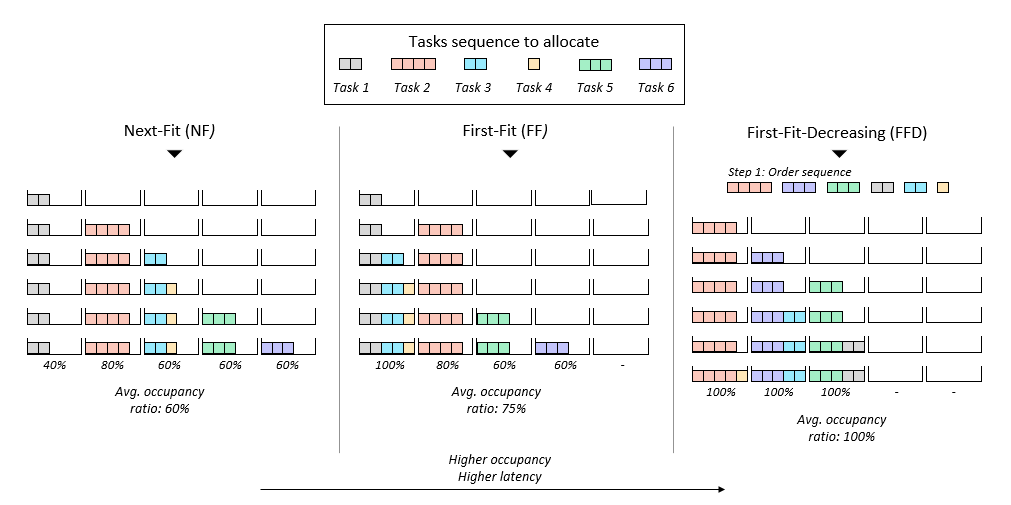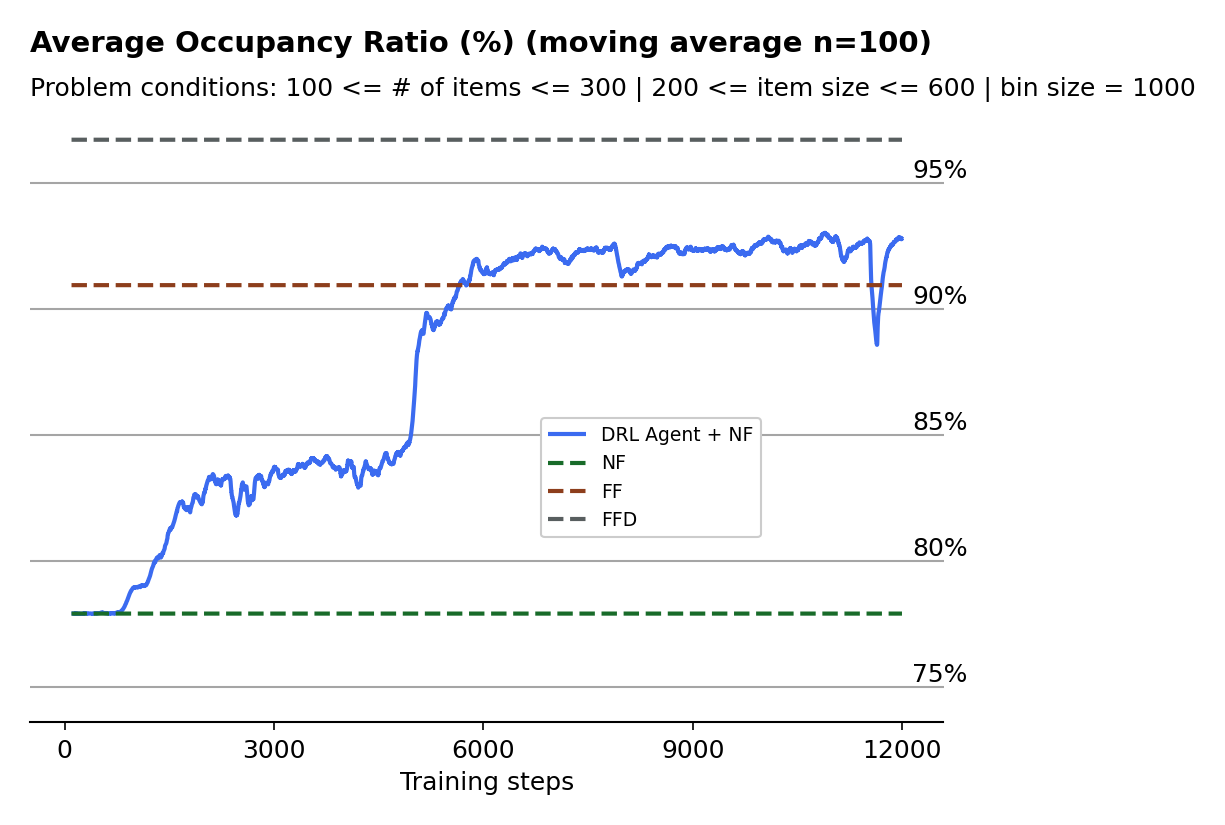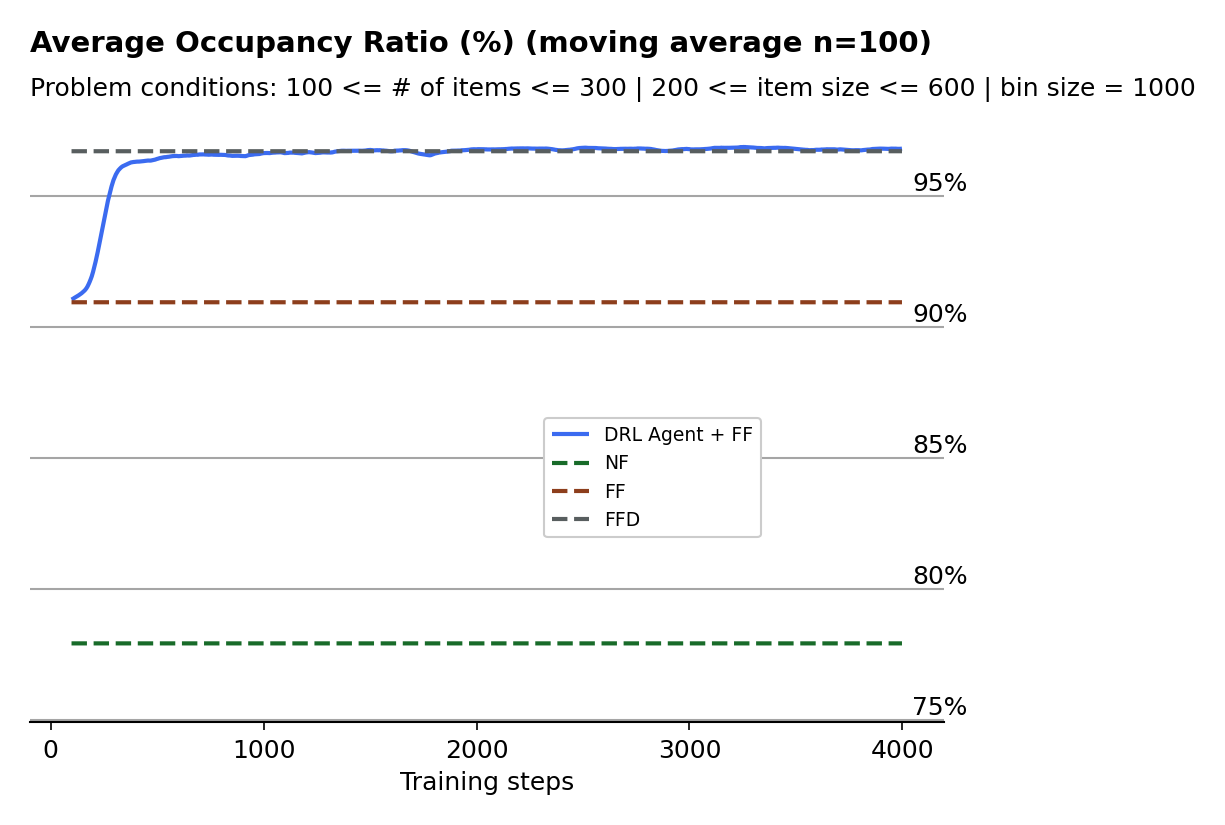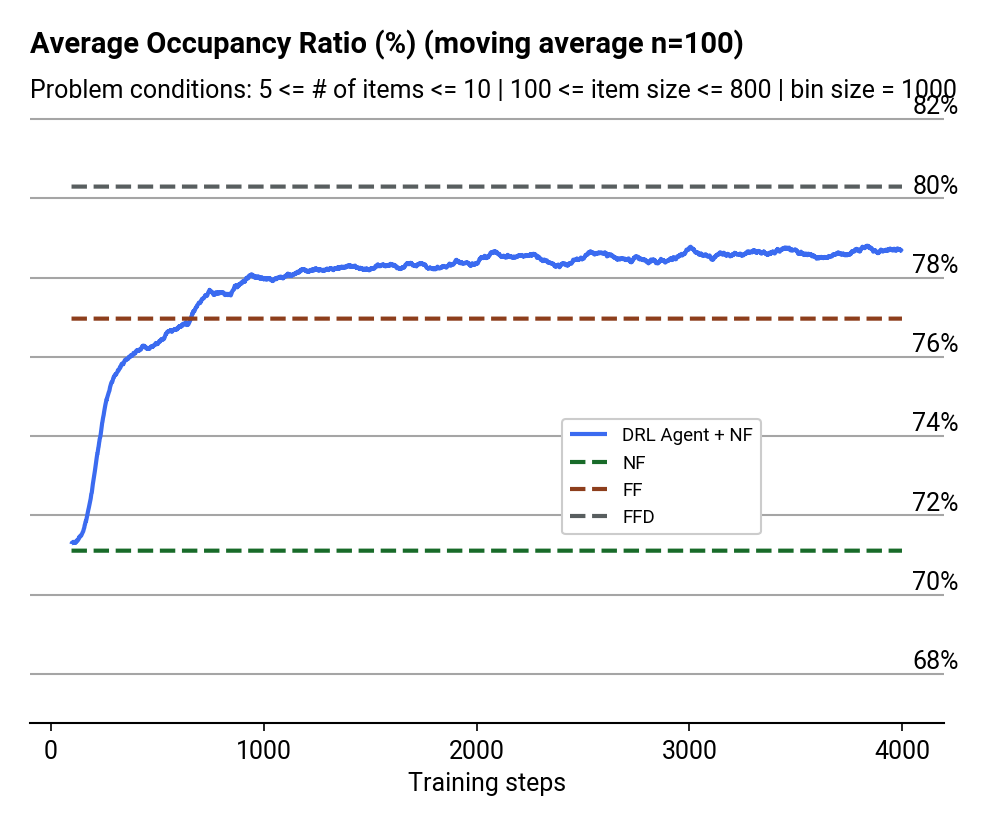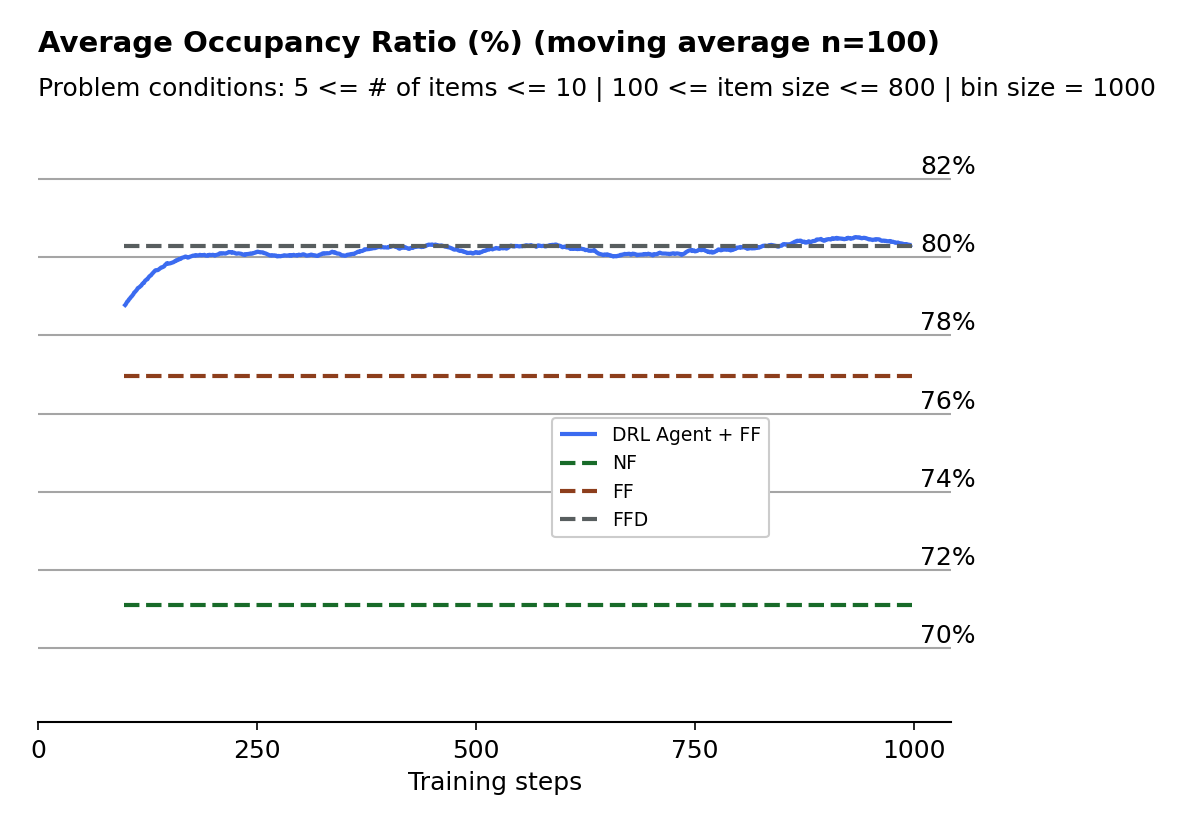Overview
Solve the 1D Bin Packing Problem using Deep Reinforcement Learning and Pointer Networks.
This PyTorch implementation solves the version of the problem where a set of items of varying sizes must be packed into the minimum number of bins possible. The bins have all the same size.
The DRL algorithm is based on the approach from Bello et al to solve the Travelling Salesman Problem. With some adaptations to make it work for the bin packing problem.
In my approach, the sequence that is output by the model is interpreted as the order in which the items must be packed in the bins. The packing is then performed either following a FF or a NF heuristic (whatever is set in the config). The reward is the average occupancy of the bins in %. The agent learns to not only pack items of varying size in the best possible way, but also it can learn to deal with a variable number of items (i.e. the same DNN can be used ot allocate a set of 10 items than a set of 30 items, as long as both sizes are considered during training).
This implementation was used in my master's thesis to decide which tasks allocate to which nodes in a Distributed Embedded System, in a way that minimizes the number of active nodes (it is essentially the same problem).
This implementation also compares the results of using the DRL approach with those that would have been obtained by following a Next-Fit, First-Fit and First-Fit-Decreasing heuristic.
Experiments
The model has been tested under multiple problem conditions. The "hardest" conditions I've tried were sets of up to 300 items, with an item size between 200 to 600, to bins of size 1000. An Agent using a FF heuristic reached the same performance as the FFD heuristic in <2000 steps. An Agent using a NF heuristic beat the FF heuristic and got close to the FFD heuristic in ~10k steps. This is perhaps more interesting since the NF heuristic is quite cheap in terms of memory and speed.
Average Occupancy Ratio when the agent uses a NF heuristic to pack the items in the order given by the pointer DNN:
Average Occupancy Ratio when the agent uses a FF heuristic to pack the items in the order given by the pointer DNN:
Usage
Install required libraries
pip install -r requirements.txt
Train the agent
Problem conditions can be set via the default values in config.py or as arguments at runtime. This impact the sets of items that the agent sees during training.
The maximum number of items (max_num_items) must match the maximum number that the
agent will see during inference, since it impacts the architecture.
The rest of parameters (e.g. max_item_size) is not mandatory that they match those seen
in inference but the results will be much better if it does.
So for example, the two models saved in ./experiments/models has been trained with the below
conditions (plus all the defaults in the config.py)
Using a Next-Fit heuristic to pack the items in the order given by the pointer network:
python src/main.py --min_item_size 100 --max_item_size 800 --min_num_items 5 --max_num_items 10 --bin_size 1000 --agent_heuristic NF --model_path ./experiments/models/policy_dnn_100_800_5_10_1000_NF.pkl
Results:
Using a First-Fit heuristic to pack the items in the order given by the pointer network:
python src/main.py --min_item_size 100 --max_item_size 800 --min_num_items 5 --max_num_items 10 --bin_size 1000 --agent_heuristic FF --model_path ./experiments/models/policy_dnn_100_800_5_10_1000_FF.pkl
Results:
Run inference on sets of items
The models from the examples above could then be used to pack the sets of items given by
inference_data\input_states.txt. For example:
python src/main.py --inference=True --model_path ./experiments/models/policy_dnn_100_800_5_10_1000_FF.pkl --inference_data_path ./experiments/inference_data/input_states.txt --agent_heuristic FF --max_num_items=10
Further work
The current approach follows the approach in the references which is to output a sequence "pointing" to positions in the input. Hence the need to follow an allocation heuristic (either NF or FF) to then pack that sequence. The optimality of the solution might be limited by the heuristic itself. Hence, it would be interesting to try a different architecture that directly outputs the bin to which each item is packed, and see if it gets better results.

